RARE! WWII B-17 Flying Fortress .50 Caliber Machine Gun Bullet Casing 8th Air Force 100th Bomb Group Thorpe Abbotts with Unique Military Gift Display Case (C.O.A. Included)
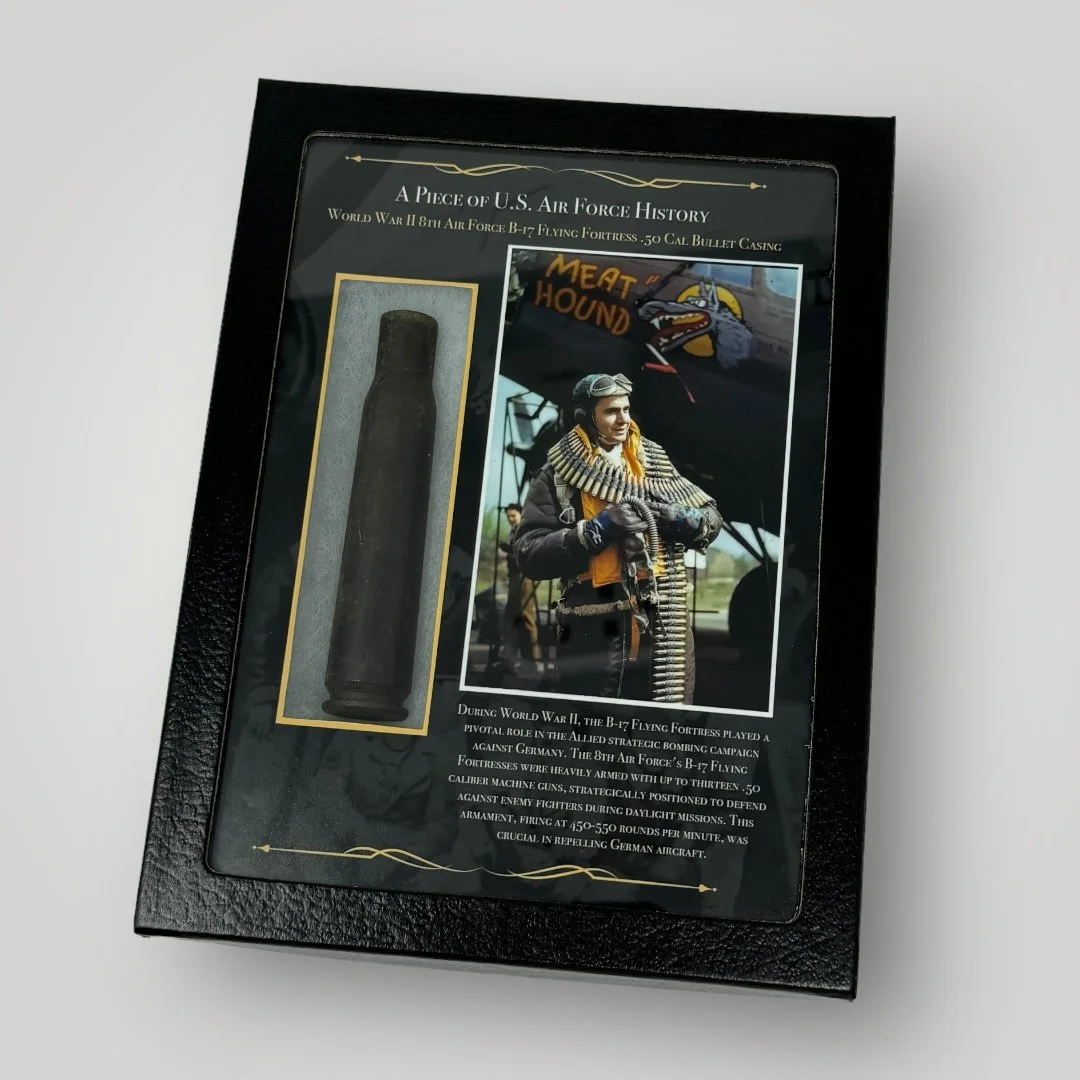
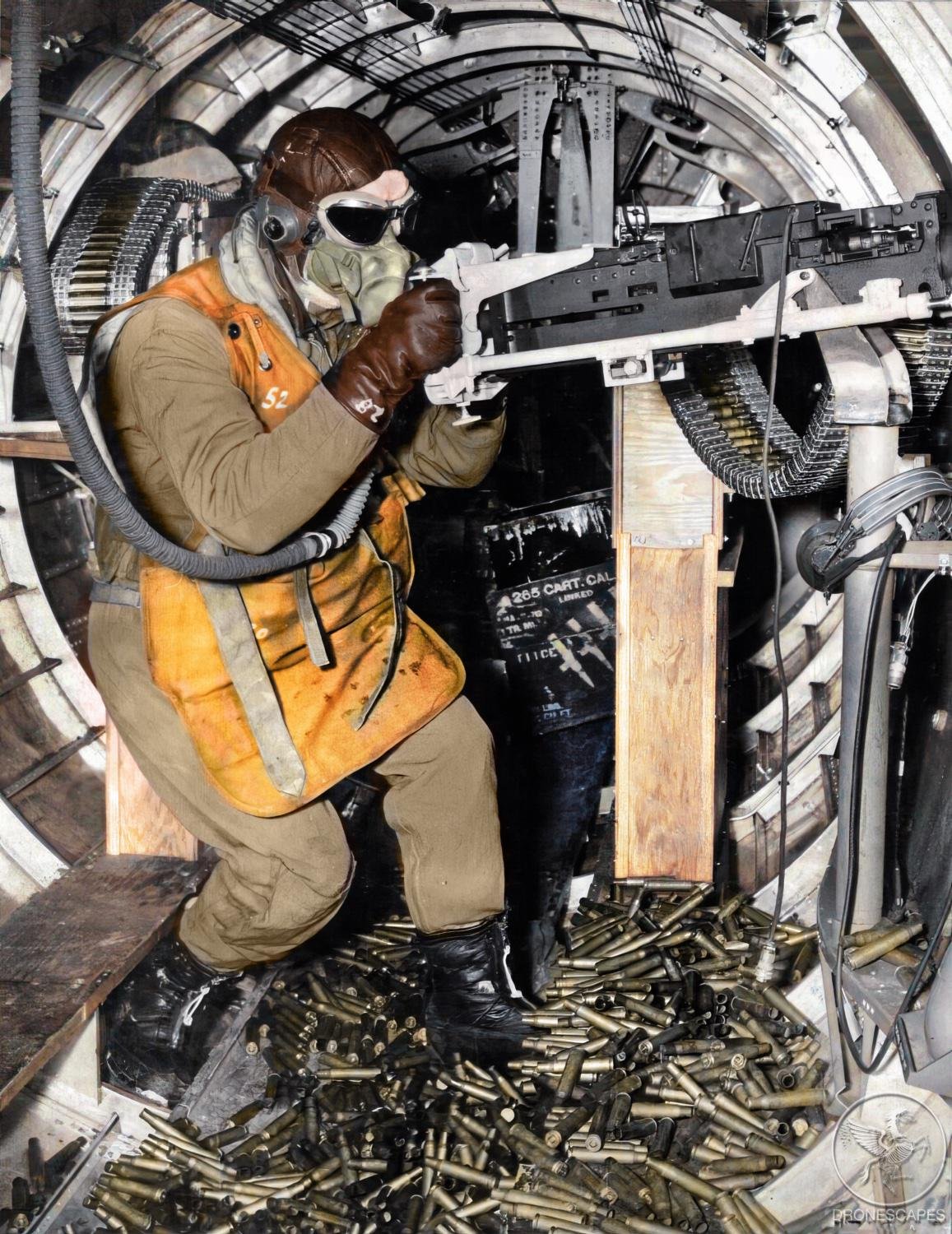


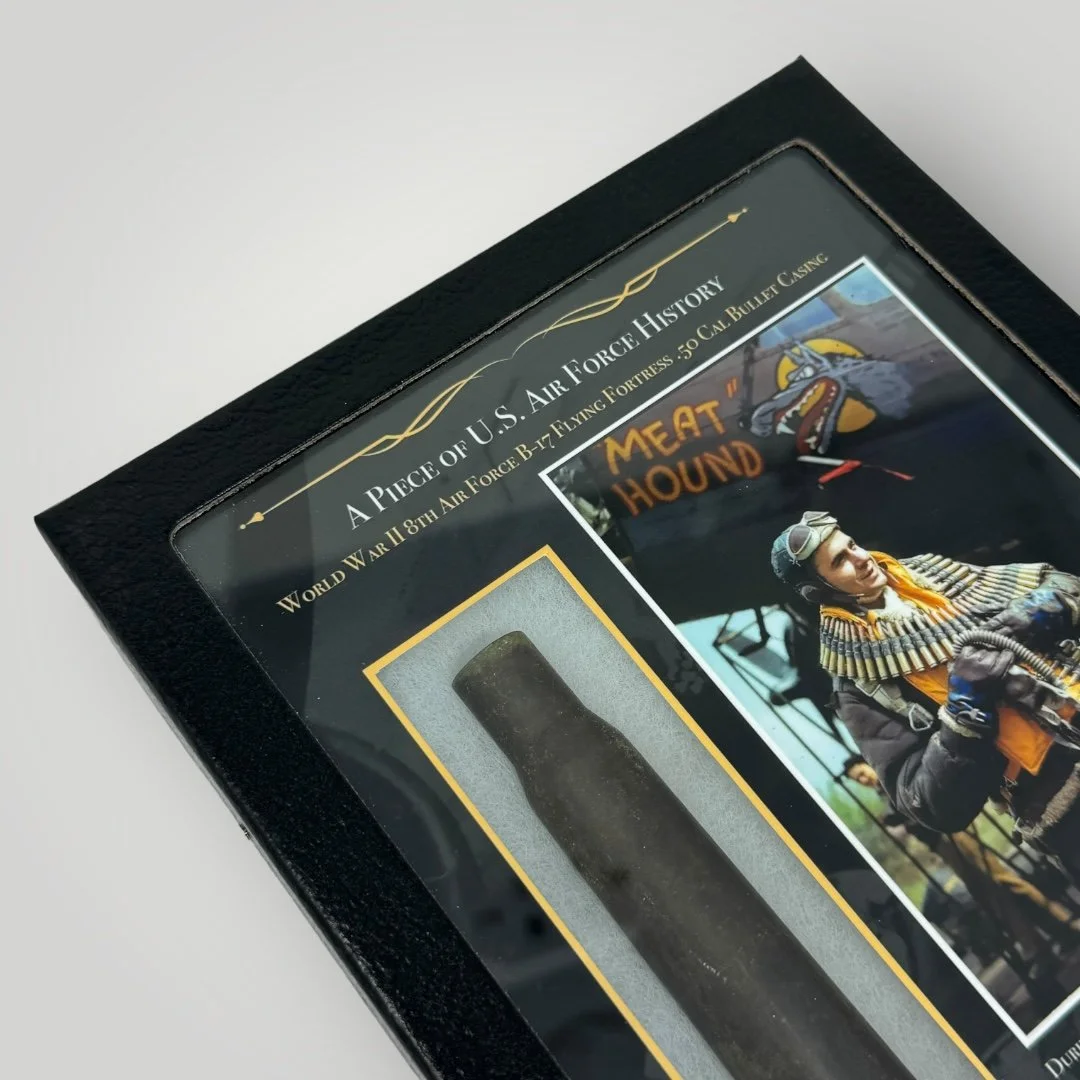
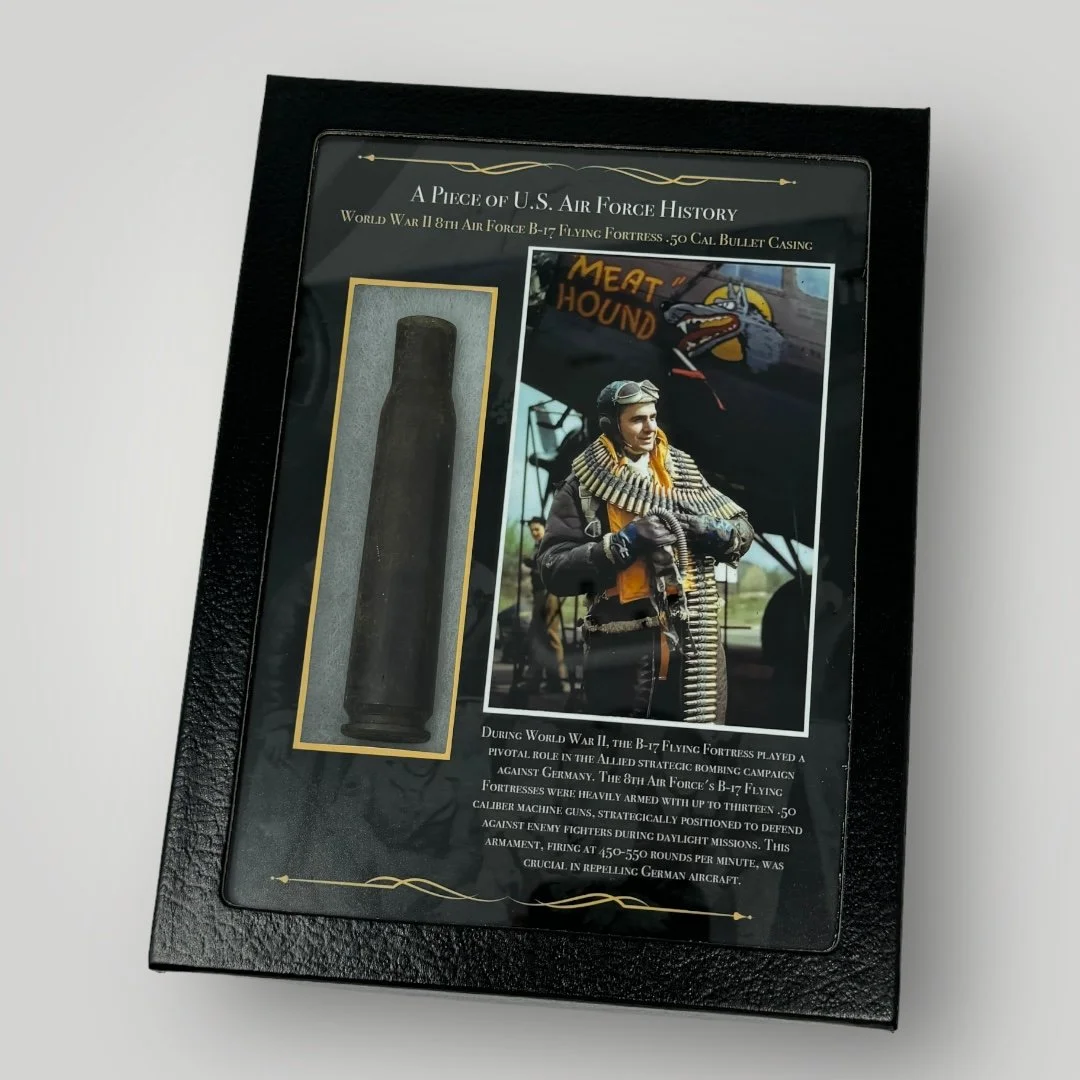
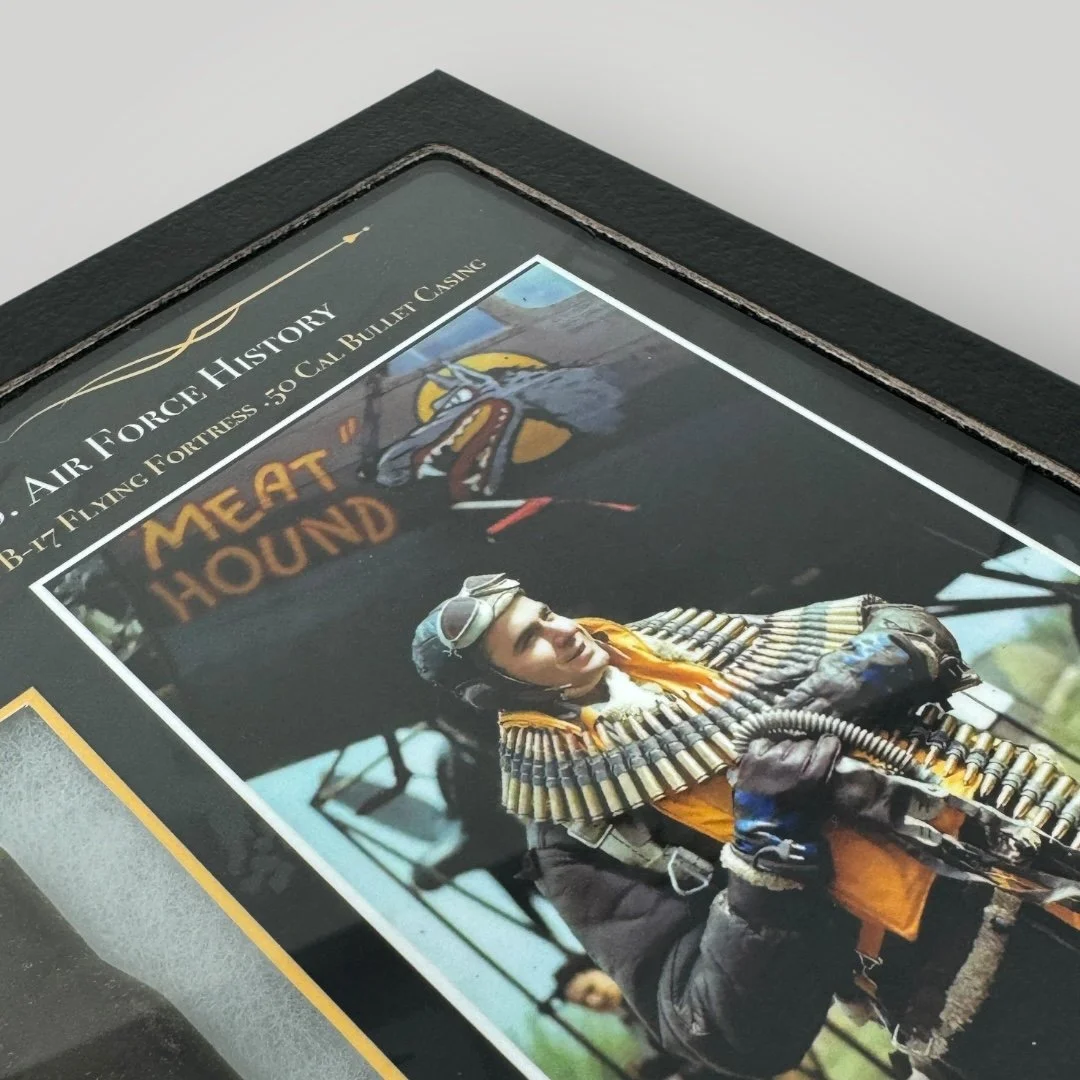
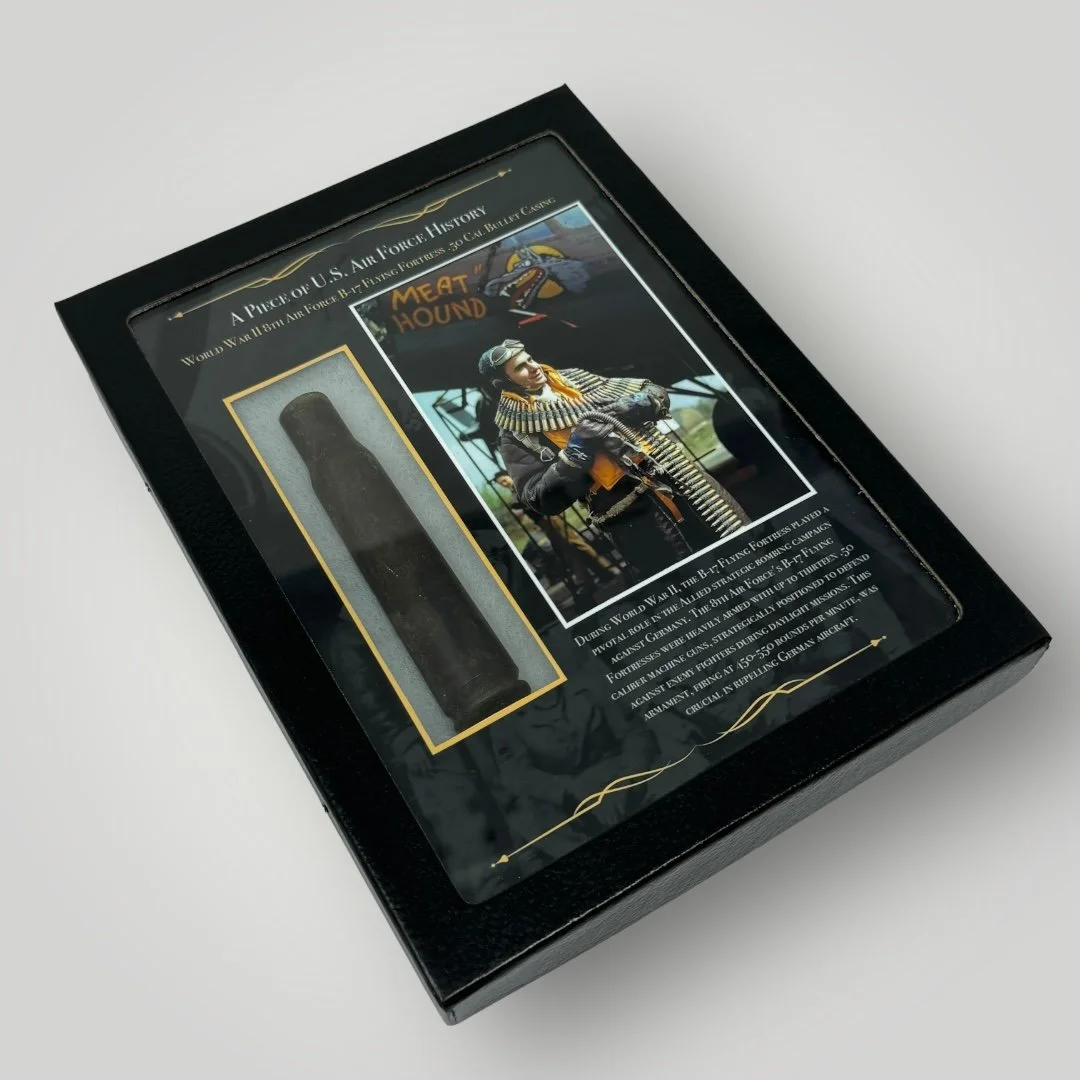




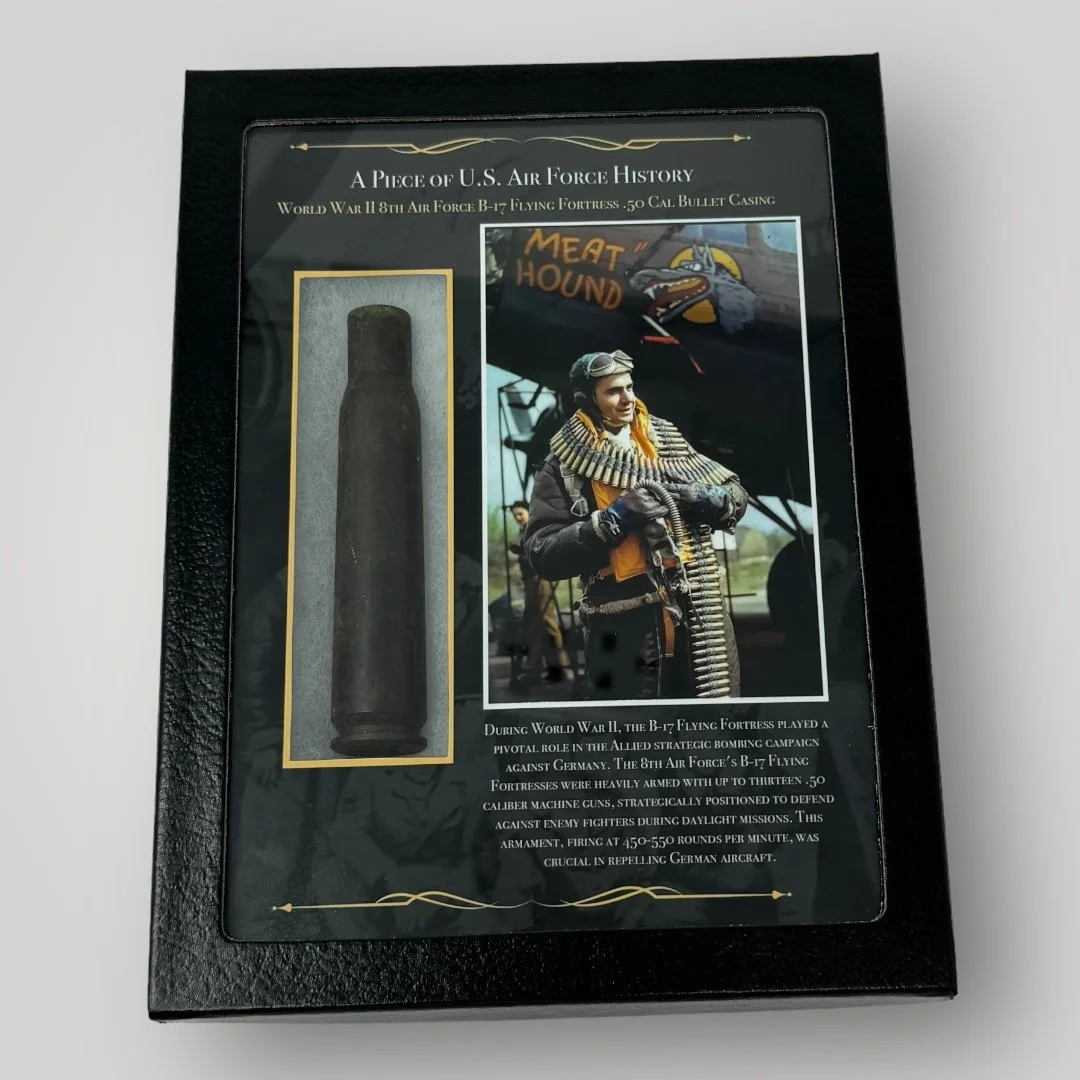




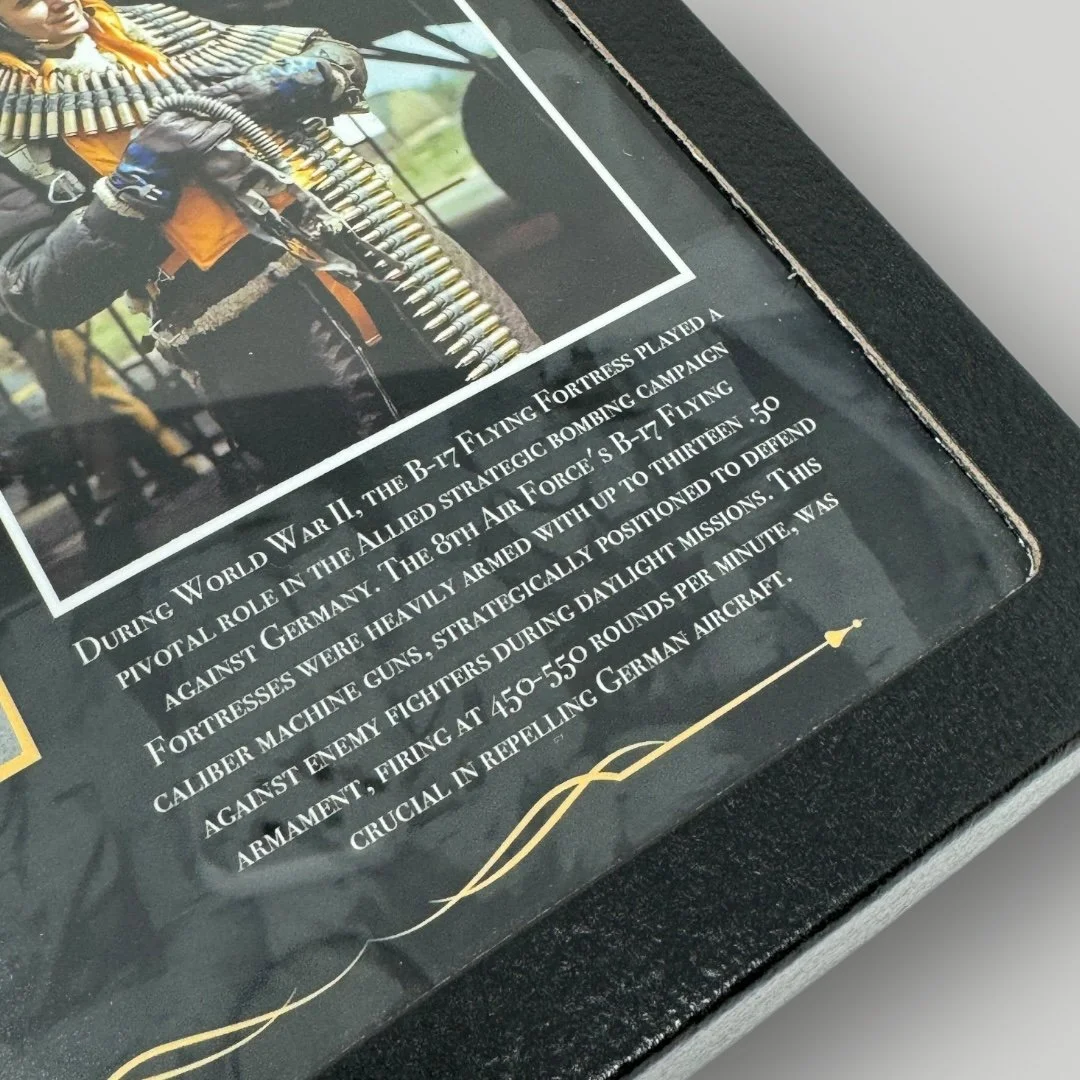



RARE! WWII B-17 Flying Fortress .50 Caliber Machine Gun Bullet Casing 8th Air Force 100th Bomb Group Thorpe Abbotts with Unique Military Gift Display Case (C.O.A. Included)
Comes with a hand-signed C.O.A. and a full historical research write-up
Thanks to the overwhelming demand for our authentic "Piece of History" display collection, we are excited to introduce one of our inaugural 8th Air Force B-17 Flying Fortress “FIRED” .50 caliber (LARGE) bullet casing collections!
This incredible “Piece of History“ is professionally encased in a glass display case with plush padding and a tightly sealed display case. This display case is our LARGE size and measures a perfect 8 inches tall x 6 inches wide.
This series is a limited edition of less than 25 pieces, meaning that each “Piece of History” bullet display is unique. The 8th Air Force B-17 Flying Fortress “FIRED” bullet casing you receive may vary slightly from the display shown. These displays stand as a distinctive and invaluable addition to the collection of any history enthusiast.
______________________________
This extremely rare and museum-grade World War II .50 caliber bullet casing artifact was professionally excavated from The 'Bloody 100th' Bomb Group’s Station 139, located at Thorpe Abbotts in East Anglia. Located 20 miles south of Norwich and 90 miles northeast of London, Thorpe Abbotts was one of the hundred-odd airfields used by the Eighth Air Force in the United Kingdom during the war.
The .50 Caliber Machine Guns of the 100th Bomb Group: Vital Defense in the Skies of WWII:
During World War II, the B-17 Flying Fortress became an iconic symbol of the United States’ aerial might. Equipped with .50 caliber machine guns, these aircraft were a critical part of the strategic bombing campaigns over Europe, aimed at crippling Nazi Germany's war capabilities. The 100th Bomb Group of the 8th Air Force, stationed at Thorpe Abbotts in Norfolk, England, was one of the groups that piloted these formidable bombers.
Deployment and Tactical Use of .50 Caliber Machine Guns in B-17s
The B-17 was designed with defense as a priority, featuring multiple gun stations that housed the .50 caliber M2 Browning machine guns. These guns were strategically positioned throughout the aircraft: in the nose, dorsal (top turret), ventral (ball turret), waist positions, and tail. This configuration allowed for an optimal defensive perimeter against enemy fighters. Each gun was capable of firing at a rate of about 750-850 rounds per minute, with a muzzle velocity of 2,910 feet per second, making them formidable tools against the Luftwaffe's attacks.
The 100th Bomb Group’s B-17s typically embarked on missions that would last several hours, targeting factories, oil refineries, and other strategic sites deep within enemy territory. During these missions, Luftwaffe fighters frequently attacked the formations. The .50 caliber machine guns were essential for the bombers' defense, enabling them to create a protective screen of bullets around the formation, deterring or destroying enemy aircraft that attempted close-range attacks.
The gunners in these aircraft were highly trained to operate under extreme conditions — high altitudes, low temperatures, and the constant threat of enemy fire. The effectiveness of these gunners was crucial not only for protecting their aircraft but also for ensuring the safety of the entire bomber formation. The camaraderie and teamwork among the crew members, particularly the gunners, played a significant role in their survival and mission success.
Impact of .50 Caliber Machine Guns on Mission Outcomes
The defensive firepower of the .50 caliber guns cannot be understated. On numerous occasions, the deterrence and defensive capabilities of these guns significantly reduced potential casualties and aircraft losses within the 100th Bomb Group. For instance, during raids over heavily defended targets like Berlin and Munster, the prowess of B-17 gunners was put to the test. The ability to repel fighter assaults often meant the difference between life and death, and between mission success and failure.
The presence of these guns also had a psychological effect on enemy pilots, who were often wary of engaging a well-armed bomber. This mental aspect of aerial combat, where the mere knowledge of an adversary's capabilities could alter tactics and engagements, played a subtle but impactful role in the air war over Europe.
Fate of Spent .50 Caliber Casings
An often-overlooked aspect of the air missions was the fate of the spent ammunition casings. The B-17s returned from missions laden not just with the scars of battle but also with thousands of spent .50 caliber shell casings. Upon landing at Thorpe Abbotts, ground crews were tasked with the maintenance and readying of aircraft for subsequent missions, which included the cleanup and disposal of these casings.
Removing spent shell casings from a B-17 after a mission can be a lot of work because of the amount of brass that needs to be cleaned up and disposed of. During World War II, many shell casings from bomber raids fell to the ground and were scattered across the battle areas. After the war, some casings were collected for scrap metal or souvenirs, but many remained on the ground and have since corroded or been buried. Empty cases may also be dumped overboard or kept on the aircraft. Disposing of empty cases can reduce the aircraft's weight and the chance of the scrap metal jamming something important. However, discarded cases can pose a hazard to other aircraft nearby and sometimes to the aircraft itself.
The .50 caliber machine guns aboard the B-17 Flying Fortresses of the 100th Bomb Group were crucial components in the Allies' strategic bombing campaign. These weapons provided essential defensive capabilities that saved lives and contributed to the operational successes of countless missions. The effectiveness of these guns, combined with the bravery and skill of the gunners, underscores the complexity and depth of aerial combat in World War II. Meanwhile, the recycling of spent casings at Thorpe Abbotts symbolizes the all-encompassing nature of the war effort, where every resource, down to spent bullet casings, was utilized in the fight for victory. The story of these guns and their casings thus weaves into the larger narrative of ingenuity, resilience, and teamwork that defines the legacy of the 100th Bomb Group and the Eighth Air Force during the Second World War.
__________________________________________________
The 100th Bomb Group of the 8th Air Force: Heroism and Sacrifice at Thorpe Abbotts During World War II:
World War II was marked by numerous battlefronts and countless acts of valor, both on the ground and in the skies. Among the aerial combat units that distinguished themselves, the 100th Bomb Group of the United States Eighth Air Force stands out. This unit, also famously known as the "Bloody Hundredth," was stationed at Thorpe Abbotts in Norfolk, England. Its heroic yet devastating operations during the war offer a poignant glimpse into the air war over Nazi-occupied Europe and the brutal costs of aerial bombing campaigns.
Formation and Early Operations
The 100th Bomb Group was activated on June 1, 1942, and officially stationed at Thorpe Abbotts in June 1943. This airfield, specifically built for the American bomber units, soon became the epicenter of the 100th's wartime operations. The Group was part of the larger Eighth Air Force, a crucial segment of the United States Army Air Forces in Europe, which played a pivotal role in the strategic bombing campaign against Germany.
Equipped primarily with B-17 Flying Fortresses, the 100th Bomb Group was tasked with the execution of daylight strategic bombing missions. These missions targeted key military and industrial sites within Nazi Germany and occupied territories, aiming to cripple the Axis powers' war production capabilities. The ethos of the group, driven by a sense of duty and the harsh necessities of war, was cemented in these early operations.
Challenges and Heroism
The initial missions of the 100th Bomb Group were fraught with peril. The Group suffered tremendous losses, particularly in the latter half of 1943. Missions to targets like Regensburg, Munster, and Bremen were met with fierce resistance by the Luftwaffe and intense anti-aircraft fire. The nickname "Bloody Hundredth" was born from these missions, reflecting the high casualty rates and the severe damage the Group endured.
One of the most harrowing days came on October 10, 1943, during a mission to Bremen. The Group lost a significant portion of its aircraft, with those remaining suffering heavy damage. This day exemplified the extreme risks faced by the aircrews and the staggering costs of their operations. Despite these losses, the morale and spirit of the group remained strong, a testament to their resilience and dedication to their mission.
Life at Thorpe Abbotts
Thorpe Abbotts, as the home base of the 100th Bomb Group, was more than just a military installation; it became a community for the airmen. Amidst the constant threat of missions, the base provided a semblance of normalcy with facilities like a mess hall, a theater, and a gym. Personal relationships developed here were crucial in maintaining morale, and the camaraderie among the airmen played a key role in their ability to face the challenges of their missions.
The airfield itself underwent several modifications to accommodate the needs of the operations. Maintenance crews worked tirelessly to ensure that the B-17s were mission-ready. The ground personnel, often unsung heroes of the air war, were integral to the Group's ability to continue its operations despite significant losses.
Impact and Legacy
The strategic bombing campaigns in which the 100th Bomb Group participated were crucial in degrading the industrial and military capacity of Nazi Germany. By disrupting production lines, destroying oil refineries, and targeting transportation networks, these missions contributed significantly to the eventual Allied victory in Europe.
After the war, Thorpe Abbotts was eventually returned to agricultural use, but the legacy of the "Bloody Hundredth" remains preserved. Today, the site houses a museum dedicated to the memory of the 100th Bomb Group, offering insights into the lives of the airmen and the operations they conducted. This museum serves not only as a repository of historical artifacts but also as a space for reflection on the costs of war and the bravery of those who fight it.
The story of the 100th Bomb Group is a powerful chapter in the annals of World War II history, marked by both tragic loss and heroic resilience. The connection of this unit to Thorpe Abbotts exemplifies the deep impact that the war had on both the soldiers who fought it and the communities that supported them. As we remember their sacrifices, we also celebrate their courage, a reminder of the human capacity to endure and prevail in the face of overwhelming odds. The legacy of the "Bloody Hundredth" at Thorpe Abbotts continues to inspire and teach future generations about the complexities and costs of war.